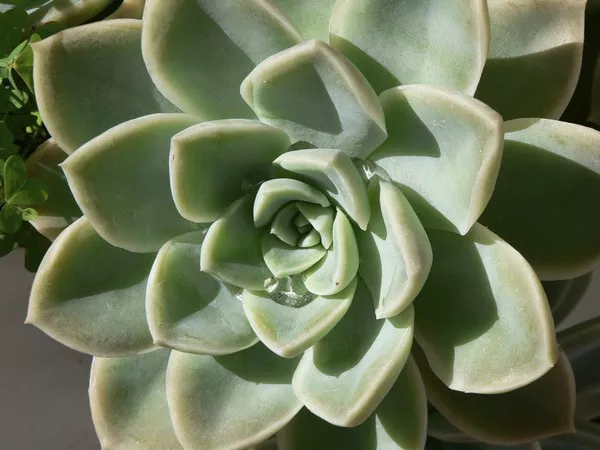Succulents have become increasingly popular in the world of gardening and interior design due to their unique and captivating appearance. One of the most rewarding aspects of succulent care is propagation, which allows you to multiply your collection and share the beauty of these remarkable plants. Learning how to start succulents from leaves is an essential skill for any succulent enthusiast, as it offers a cost-effective and fascinating way to expand your garden.
Understanding Succulents
Before delving into the propagation process, it’s important to have a solid understanding of succulents themselves. Succulents are a diverse group of plants known for their ability to store water in their leaves, stems, or roots. This adaptation allows them to thrive in arid conditions, making them perfect for both novice and experienced gardeners. The wide variety of succulent species available makes them a versatile addition to any garden or indoor space.
Choosing the Right Succulent Leaves
When starting your succulent propagation journey, it’s crucial to select the right leaves for the job. Not all succulent leaves are suitable for propagation, so knowing which ones to choose is essential. Look for healthy, mature leaves that are plump and undamaged. Avoid leaves that are etiolated, diseased, or too young. Typically, leaves that have fallen naturally from the plant are the best candidates for successful propagation.
Preparing the Leaves
Once you’ve selected the right succulent leaves, the next step is to prepare them for propagation. This involves cleanly and carefully removing the leaves from the mother plant. Gently twist the leaves from the stem, ensuring that you get a clean break. It’s important not to leave any part of the leaf attached to the stem. Afterward, allow the leaves to air dry for a day or two to form a callus, which will help prevent rot when you plant them.
Choosing the Right Container and Soil
Choosing the appropriate container and soil is another critical step in the succulent propagation process. Select a container with good drainage, as succulents are highly sensitive to overwatering. Terra cotta pots are an excellent choice due to their porous nature, but other containers with drainage holes will work as well. For soil, opt for a well-draining mix designed for succulents or cacti. Alternatively, you can create your own mix by combining potting soil with perlite or coarse sand.
Planting Succulent Leaves
Now it’s time to plant your prepared succulent leaves. Make a small hole in the soil using a pencil or stick, and then gently insert the calloused end of the leaf into the hole. You can also plant multiple leaves in the same container, but be sure to space them apart to allow for proper growth. Ensure that the leaves are planted vertically, and avoid burying them too deeply, as this can lead to rot. Water the soil lightly, and then place your container in a bright, indirect light location.
Caring for Succulent Propagations
Proper care is essential to ensure the success of your succulent leaf propagations. Succulents thrive in well-lit conditions, but they should be protected from direct sunlight, which can scorch the delicate leaves. Water sparingly, only when the soil is completely dry, and be cautious not to overwater. Overwatering is one of the most common mistakes in succulent care, as it can lead to root rot and other issues. A well-draining soil mix and container with drainage holes will help prevent waterlogged soil.
Root Formation and Growth
As time passes, you’ll start to see signs of root formation and new growth on your succulent leaves. This process can take several weeks to several months, depending on the succulent species and environmental conditions. Be patient, and continue to monitor the soil’s moisture level and lighting conditions. Once you notice that the new plantlet has established roots and grown a small rosette, it’s time to transplant it into its own container.
Transplanting Your Succulent Propagations
Transplanting your succulent propagations is an exciting and rewarding step in the propagation journey. Carefully remove the baby succulent from the container, being gentle with the roots. Prepare a new container with well-draining soil, and plant the succulent as you did with the original leaves. Water lightly and provide the same care as you would for a mature succulent. As your new plant grows, you can start treating it like a full-fledged succulent, adjusting the frequency of watering and light exposure accordingly.
Common Challenges in Succulent Propagation
While propagating succulents from leaves is a relatively straightforward process, there are some common challenges to be aware of. One of the main issues you may encounter is rot, which can occur if the leaves or baby plants are exposed to excessive moisture or if they are planted in a soil mix that does not provide adequate drainage. If you notice signs of rot, such as mushy leaves or a foul odor, remove the affected leaves or plantlets immediately to prevent it from spreading.
Conclusion
Succulent propagation from leaves is a fulfilling and captivating endeavor for succulent enthusiasts. With the right knowledge and care, you can create a stunning collection of succulents while saving money and sharing the beauty of these plants with others. Remember to select the right leaves, provide the correct container and soil, and care for your propagations diligently. Be patient, and enjoy the process as you watch your tiny succulent leaves grow into thriving, independent plants. By following these steps and staying attuned to your succulents’ needs, you can successfully start succulents from leaves and become a master propagator in no time.


